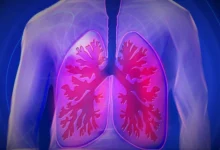Prevention from Deadly Nipah Virus Outbreak: 3 Strategies for Containment and Control
Nipah Virus

Nipah virus is a very deadly virus which could kill three out of four infected persons. Nipah virus spread from bats and pigs or the fruits eaten by bats. Owing to its severity the urgent vaccine and treatment is inevitable.

Nipah virus is an infection caused through contact to infected animals like pigs and bats. It’s basically a zoonotic disease and could be spread from bats to human and then human to human. The infected person may transmit virus to others easily. The sole way to prevent from Nipah virus is to socialize people about it. Social awareness regarding its threats, dangers and precautions are inevitable. On the other hand, in case of infection, intensive social support and medical care are required to cover and treat potential respiratory and neurological problems.
Nipah virus mode of transmission is from bats or pigs to human. It can also become contagious and can spread from human to human.
Nipah virus could also be spread from eating the contaminated fruits (previously eaten by bats).
The Nipah virus resides in Pteropodidate family of bats. Virus may be spread through eating or drinking contaminated fruits or drinks by fruits bats. For example, bats could affect dates trees and through eating contaminated dates or date products one could easily become victim of Nipah virus.
The fatality rate of Nipah virus is from 40% to 75%.
First, the virus identified in Kerala, India in Lini Puthussery, a nurse. Luckily, virus identified by the laboratory. The patient shows encephalitis like disease which doctors never seen or treated before.
The 2018 outbreak killed 17 people out of 19 infected people, death rate of 89%. After it, thorough contract tracing done and protocols of isolation deployed. After it, in 2019, Kerala witnessed another student infected from Nipah virus.
But, still apparatus to effectively deal with the potential outbreak of Nipah virus is missing. The situation may escalate from epidemic to pandemic. The absence of proper vaccine and authentic treatment making the situation more threatening.
What is infection agent of Nipah virus?
Nipah virus is connected to the Hanipavirus specie of Paramyxoviridae family.
What is Incubation period of Nipah virus?
The incubation period of Nipah virus is ranging from 5-14 days but in some more extreme situations it may extend up to 45 days. It’s mean the virus has ample time to infect others which make it more deadly.
Symptoms of Nipah Virus
It is observed that in most of cases Nipah Virus do not display any serious symptoms. But in other cases, it could exhibit mild to serious symptoms among infected people. The infected person could indulge in respiratory problems. Furthermore, in rare situations it could develop fatal encephalitis (inflammation of brain).
The common symptoms are as follows:
- Fever
- Headache
- Sore throat
- Cough
- Muscle aches (Myalgia)
- Vomiting seizures
- Coma
How to diagnose Nipah Virus Infection?
The infected person may not exhibit serious symptoms in early stages. Therefore, it is not that simple to diagnose it in initial days of infection. However, medical practitioners’ may focus on couple of tests for ensured diagnosis. The main tests are:
- Real time polymerase chain reaction (RT-PCR)
- Enzyme linked immonosorbent assay (ELISA)
- PCR
- Virus isolation through cell culture
However, such tests may not be available in remote areas like rural settings, which may be affected more than urban areas.
What is treatment of Nipah Virus?
As far as the treatment of Nipah virus is concerned, there is not any specific treatment of it. No vaccine is still available. However, World Health Organization has a keen focus on it and its under review of WHO Research and Development Blueprint. However, uptill now intensive supportive care iss recommended for infected patients.
Historical Precedence
In 1999, Malaysia faced outbreak of Nipah virus and infected pig farmers. It’s really fortunate that after since no outbreak observed in Malaysia.
Bangladesh is second most affected country where Nipah virus was identified in 2001 and it’s recurrent there every year.
Where Nipah is circulating?
The deadly Nipah virus is circulating in
- Bangladesh
- India
- Malaysia
- Singapore
Despite spread in above mentioned countries, it may not restrict and may affect other borders as well if effectively measures of isolation and precautions do not employed.
What is case definition of Nipah infection?
- Suspected Case: Any person having fever, sore throat, seizures, encephalitis or breathing difficulty.
- Probable Case: A suspected case having epidemiological linkage or positive serological test.
- Confirmed Case: Any suspected or probable case having laboratory confirmations.
Is there any effective vaccine against Nipah Virus?
Although, the treatment or vaccine of Nipah virus are not present yet there are some developments. A phase 1 study of Nipah virus vaccine was initiated in February 2020 and there were expectations to complete till September 2021. The CEPI invested around US 25 million dollars in 2018 to commence an initial study which is being run by LLC and it’s been led by PATH. Initially, the study will cover and test vaccine on healthy 18-49 years adults to notice immune response and safety.
How to avoid pandemic?
Although, vaccine and valid treatments play pivotal role in disease prevention yet the need of proper surveillance and control is really important. The genuine investigations, contract tracings and spillover controls are extremely vital for prevention of disease. Such measures help in minimizing the threats of further spread.
Strategies to avoid infection
As we all know that the infection has no vaccine yet therefore the prime way is to educate people about its dangers, precautions and risk factors. Through proper social awareness we could save ourselves from such infections. However, there are three basic social awareness strategies to prevent Nipah infection.
How to minimize bat to human transmission?
As Nipah is spreading primarily from bats that’s why first of all exposure of bats to human must be curtailed. The necessary measures are required to keep bats away from dates, palm and other fruits. Preventions regarding keeping the bats away from sap collection points may be helpful. One must use safe and clean fruits and avoid using scared or already mishandled fruits. The fruits having signs of any bite must be discarded instantly.
How to limit animal to human transmission?
One must wear gloves, mask and head covers while dealing with infected animals. Special care must be employed while slaughtering animals. Furthermore, the countries where pig farming is undergoing need special care as well. Pigs handling, feeding and care require acute attention and care to minimize transmission threat.
Pig farm owners must keep into consideration that the bats may not be reproduce nearby. Close surveillance and care is required to keep the infection on back foot.
How to minimize threat of human to human transmission?
Like covid-19, Nipah virus is also deadly and requires special care. Any unprotected physical contact with infected person must be avoided. Use of fomites should be avoided in case of infection or at least safe disposal of them must be ensured.
Among lot of other options, one of the most important way to minimize threat to spread is a regular hand washing. Personal hygiene helps in minimizing the threat of spread.
The epidemic must not transform into pandemic like covid-19.
Conclusions
The deadly and extremely contagious Nipah virus is a member of the Paramyxoviridae family. Although its natural host, fruit bats (flying foxes), is the primary victims of this zoonotic virus, humans can contract it by coming into touch with infected animals or by ingesting contaminated fruits or palm sap.
The virus outbreaks have been reported in a number of nations, mostly in South and Southeast Asia, with Bangladesh and Malaysia serving as prominent epicenters. From a minor flu-like sickness to severe encephalitis, the virus can produce a variety of symptoms in people, frequently with a high death rate. Nipah virus outbreaks are a significant public health concern due to its potential for rapid transmission and the lack of specialized antiviral therapies, necessitating rigorous containment measures and research initiatives to produce efficient
Nipah virus is an infection caused by infected bats and pigs. It could transmit from animal to human and from human to human. The threat of Nipah is widening up and serious steps are required to effectively prevent it.
Till now, there are no vaccines or authentic treatment of Nipah virus. This is why the social awareness and individual responsibility is required to keep ourselves safe and secured.
The Nipah virus has certain symptoms like fever, sore throat, vomiting, and dizziness and in serious cases encephalitis. However, most of patients may not exhibit symptoms which make the situation even worse because in such case the virus may continue to shed from infected person and contaminate others.
The need of time is to keep higher standards of personal hygiene to prevent the disease. Proper hand washing may also help a lot to avoid exposure to the virus.
One must avoid meeting the infected persons and keeping a safe distance until his recovery.
FAQs
What is Nipah Virus?
Nipah virus is a very deadly virus which could kill three out of four infected persons. Nipah virus spread from bats and pigs or the fruits eaten by bats. Owing to its severity the urgent vaccine and treatment is inevitable.
What is Incubation period of Nipah virus?
The incubation period of Nipah virus is ranging from 5-14 days but in some more extreme situations it may extend up to 45 days. It’s mean the virus has ample time to infect others which make it more deadly.
What are symptoms of Nipah Virus?
The common symptoms are as follows:
· Fever
· Headache
· Sore throat
· Cough
· Muscle aches (Myalgia)
· Vomiting seizures
· Coma
What is treatment of Nipah Virus?
As far as the treatment of Nipah virus is concerned, there is not any specific treatment of it. No vaccine is still available. However, World Health Organization has a keen focus on it and its under review of WHO Research and Development Blueprint. However, uptill now intensive supportive care iss recommended for infected patients.






